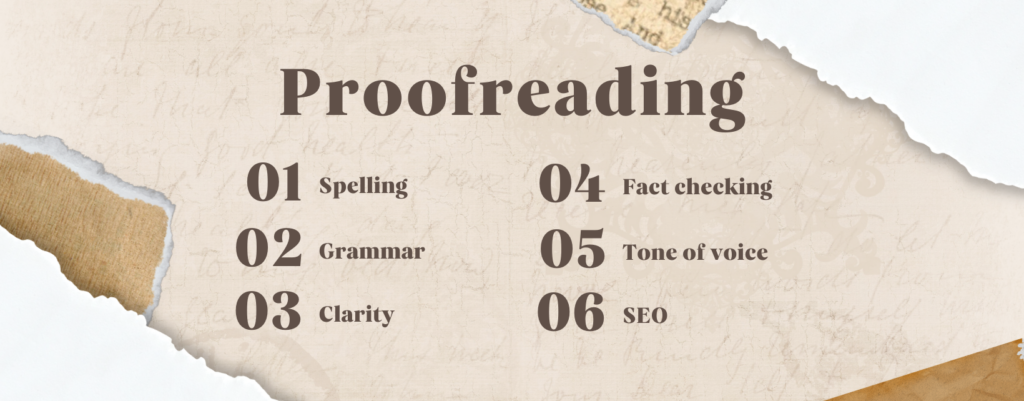13 steps to create effective content writing
Producing copy that effectively gets your message across is vital for any business.
Digital communication has made content writing a cornerstone of successful online presence and engagement. Whether you’re a seasoned content creator or a novice looking to enhance your writing skills, mastering the art of effective content writing is essential. This article will walk you through the key steps to create compelling and impactful content that resonates with your audience.
1. Understand your audience
The foundation of effective content writing lies in understanding your audience. Before you start writing, take the time to research and identify your target demographic. Consider their preferences, needs, and pain points. By developing a deep understanding of your audience, you can tailor your content to address their specific interests and concerns. This targeted approach enhances the relevance of your content, making it more engaging and valuable to your readers.
2. Define your purpose and goals
Every piece of content should have a clear purpose and set of goals. Whether you aim to inform, entertain, educate, or inspire, defining your objectives helps guide your writing process. Establishing clear goals also enables you to measure the success of your content. Are you looking to increase website traffic, generate leads, or boost brand awareness? By aligning your content with specific goals, you can create focused and purposeful writing that drives results.
3. Conduct thorough research
Research is the backbone of quality content writing. Whether you’re writing a blog post, article, or social media update, accurate and reliable information is crucial. Use reputable sources, data, and statistics to support your claims and enhance the credibility of your content. Take the time to delve into your topic, explore different perspectives, and gain a comprehensive understanding before putting pen to paper – or fingers to keyboard.
4. Embrace – but don’t rely on – AI
If you’re producing a lot of content on a regular basis, it can be a drain on your creative energy. For this reason, AI copywriting tools, such as ChatGPT, can be helpful in terms of generating new ideas and content ideas.
However, it’s wise not to rely on AI for all your content generation, as it tends to produce very similar ideas or phrases that become noticeable when used repeatedly. AI is best used to support an experienced copywriter, rather than used in place of one.
5. Craft a captivating headline
Your headline is the first impression your content makes on your audience. A compelling headline captures attention and entices readers to explore further. Use power words, create a sense of urgency, or pose a thought-provoking question. Aim for clarity and conciseness while making sure your headline accurately reflects the content of your piece. Crafting an irresistible headline is a critical step in drawing readers in and encouraging them to engage with your content.
6. Develop a strong introduction
Once you’ve captured your audience’s attention with a compelling headline, it’s crucial to maintain that interest in the introduction. The opening paragraphs should provide a concise overview of what your content offers and why it matters to the reader. Consider using anecdotes, statistics, or quotes to create a connection and set the tone for the rest of the piece. A strong introduction lays the groundwork for an engaging and informative reading experience.
7. Create engaging and readable content
Effective content writing goes beyond presenting information – it involves creating an enjoyable reading experience. Use clear and concise language, break up long paragraphs, and incorporate subheadings to improve readability. Consider your audience’s attention span and aim for a balance between depth and brevity. Additionally, use a conversational tone to connect with readers on a personal level. The more engaging and readable your content, the more likely it is to resonate with your audience.
8. Use visual elements strategically
Visual elements such as images, infographics, and videos can significantly enhance the impact of your content. Humans are visual beings, and incorporating relevant visuals not only breaks up the text but also reinforces your message. Choose high-quality, relevant images that complement your content and help convey complex ideas. Alt text for images is also essential for accessibility and search engine optimisation (SEO). Including a variety of multimedia elements makes your content more dynamic and appealing.
9. Optimise for SEO
Search engine optimisation (SEO) is a crucial aspect of effective content writing, as it determines how easily your content is discovered by search engines. Identify relevant keywords related to your topic and incorporate them naturally throughout your content. Focus on creating valuable, high-quality content that answers the questions your audience is likely to have. Additionally, optimise meta tags, headings, and image alt text to improve your content’s visibility in search engine results.
10. Maintain consistent brand voice
Consistency in brand voice is essential for building a recognisable and trustworthy brand identity. Whether you’re writing blog posts, social media updates, or marketing copy, maintain a consistent tone and style. Your brand voice should reflect your company’s values and resonate with your target audience. Consistency builds trust and helps your audience connect with your brand on a deeper level.
11. Edit and proofread
No matter how well-written your initial draft may be, editing and proofreading are non-negotiable steps in the content creation process. Take the time to review your content for clarity, grammar, punctuation, and spelling errors. Consider the overall flow and structure, ensuring that your ideas are presented logically. If possible, have someone else review your work to provide fresh insights and catch any overlooked mistakes. Well-edited content not only enhances your professional image but also ensures that your message is communicated effectively.
12. Encourage audience engagement
Effective content writing goes beyond delivering information – it should also inspire audience engagement. Encourage readers to share their thoughts, ask questions, and participate in discussions. Include calls-to-action (CTAs) that prompt readers to take the next step, whether it’s subscribing to a newsletter, exploring related content, or making a purchase. Foster a sense of community by responding to comments and interacting with your audience across various platforms. The more engaged your audience is, the more successful your content becomes.
13. Analyse and iterate
After publishing your content, the journey doesn’t end. Analysing the performance of your content is crucial for continuous improvement. Use analytics tools to track key metrics such as website traffic, click-through rates, and social media engagement. Identify what worked well and what areas could be improved. Pay attention to audience feedback and adapt your content strategy accordingly. Successful content creation is an iterative process that involves learning from each piece and refining your approach over time.
Conclusion
Mastering the art of effective content writing is a dynamic and ongoing process. By understanding your audience, setting clear goals, conducting thorough research, and implementing the key steps outlined in this guide, you can create content that not only captures attention but also delivers value to your readers. Remember, the journey to becoming a proficient content writer is a continuous one, so embrace the learning process, stay adaptable, and always strive for improvement. As you hone your skills, you’ll find your unique voice and style that resonate with your audience, fostering long-term connections and success in the ever-evolving digital landscape.






